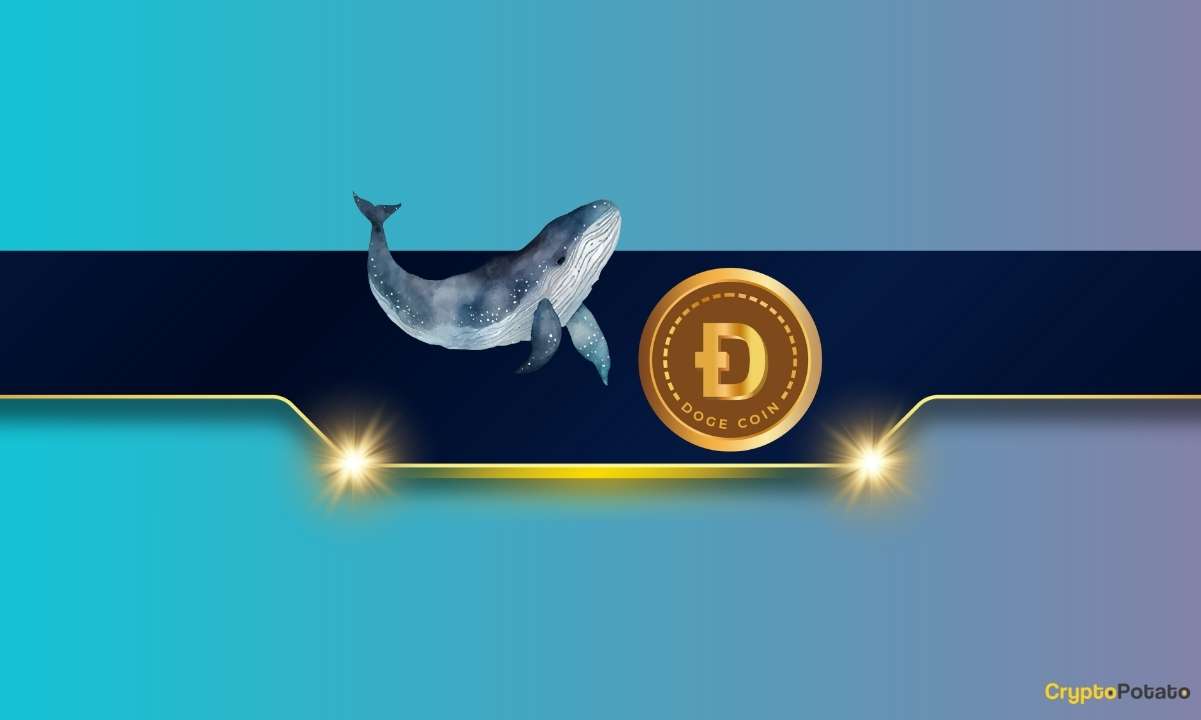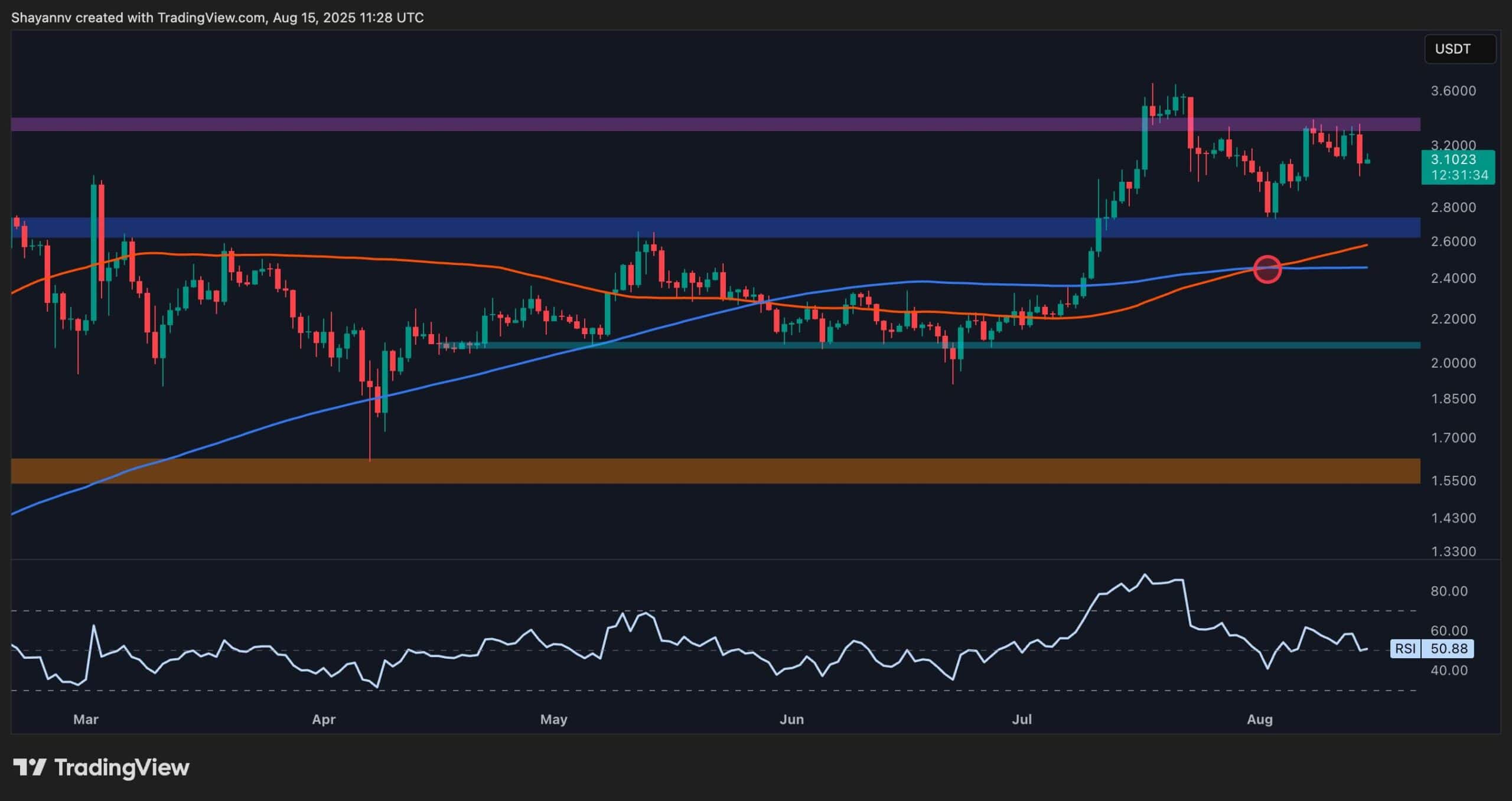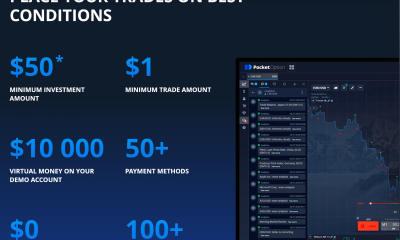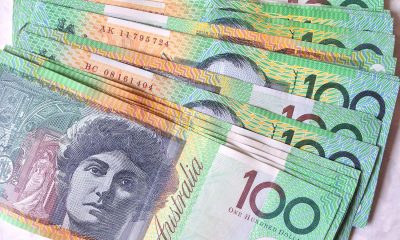Cryptocurrency
A new age in investing: The transformative power of asset tokenization

Asset tokenization has long been regarded as one of the most compelling applications of blockchain technology. Back in June 2019, the United States investment banking giant BNY Mellon declared it has the potential to “dramatically change the dynamic” for investors and unlock opportunities that were previously out of reach.
Real estate is an inevitable place to start. Tokenizing properties can open the door to fractional ownership, enabling individuals to purchase a small chunk of a building. The volatility of global markets has shown why diversification is crucial — but until now, the sheer cost of real estate has made it inaccessible for many.

The benefits might not stop here, either. It can take up to six months to close a purchase on a home, all thanks to a process that is time-consuming, agonizing and surprisingly paper-based. Tokenization has the potential to speed things up, all while offering a higher degree of trust and transparency. Enhanced liquidity could ultimately revitalize the market, making transactions frictionless.
There are also ramifications in the world of business. Franchising has proven an exceptionally popular way of expanding a brand — with McDonald’s, Subway and Chick-fil-A just some of the fast-food giants that allow entrepreneurs to open their own stores. Here’s the problem, though: there are huge expenses involved with this kind of investment. According to the HR company ADP, startup costs can be as high as $5 million — a sum that few individuals could summon up on their own. The fractional ownership achieved through tokenization can remove barriers to entry, delivering tangible benefits for every participant in such an ecosystem.
Elsewhere, tokenization could offer a modern twist on crowdfunding, which has allowed cutting-edge products to hit the market with the support of everyday consumers. Embracing blockchain can allow entrepreneurs to reach a wider cross-section of investors, all while delivering higher levels of liquidity. This could also transform the way pricey infrastructure projects get off the ground, especially in the renewable energy sector. Not only could this unlock fresh funding in the race to slash carbon emissions, but this could also bring down household bills.
Over on the star-studded streets of Hollywood, tokenization is already making its presence felt. From film productions to music rights, passionate fans can now take a financial stake in the creations they care about most. This can also free content creators from the confines of record labels and movie studios, allowing them to take risks and take control of their destiny. Better still, it also means anyone can become a celebrity. One compelling use case in this arena relates to Stoner Cats, an animated series backed by NFTs that was launched by Mila Kunis in 2021. It sold out in just 35 minutes.
Making tokenization usable
One could argue that this is just the tip of the iceberg when it comes to the potential use cases for tokenization, but there are challenges that stand in the way. One of them is regulation, and fractured frameworks in jurisdictions around the world mean there’s a lack of cohesion for entrepreneurs who want to embrace this technology.
It’s also a very new space, with limited historical data and ties to a volatile market. That’s where platforms like Brickken come in. Similar to Shopify enabling customized e-commerce stores, Brickken enables tokenizing businesses to create their own custom Token Store, further enhancing the demystification of tokenization. This project’s goal is to help digital assets be created, sold and managed in a seamless way. By offering a series of user-friendly tools and features presented in an all-in-one platform, Brickken empowers companies to easily embrace tokenization and infuse a 21st-century twist into their business model.
One of the most significant use cases for Brickken’s platform is the tokenization of real estate. By leveraging blockchain technology, Brickken facilitates fractional ownership of real estate, making real estate investing more accessible and inclusive. Through tokenization, investors can acquire fractional ownership tokens that represent a portion of the property’s value. This approach opens new avenues for liquidity, reduces barriers to entry, and enables a more efficient and transparent real estate market.
Beyond real estate tokenization, Brickken offers companies the ability to tokenize their equity or debt instruments, revolutionizing the way capital is raised. Through the platform, companies can create digital tokens that represent equity or debt instruments, allowing investors to participate in the growth and success of the business. This approach opens up new opportunities for startups and established companies alike, providing greater access to capital and fostering a more inclusive investment ecosystem.
Moreover, Brickken is addressing the challenge of limited capital in renewable energy investments by tokenizing projects, promoting fractional ownership and accessibility. Investors can now purchase fractional shares, overcoming financial barriers and supporting sustainable initiatives.
Simplifying life through tokenization
Billed as a no-code solution that is white-label by nature, Brickken says it offers a global ecosystem of partners to ensure each client is supported at every step of their journey, holding their hand while assets are fractionalized.
A key component of this ecosystem is the platform’s native token BKN, which provides users with access to a variety of services and benefits. Token holders can participate in tokenized investments, gaining exposure to real estate, art, intellectual property and other exciting asset classes. In addition, BKN tokens grant users exclusive access to premium features, discounts and rewards within the Brickken marketplace. Holders can also participate in governance decisions and shape the future direction of the platform.
Brickken’s key point is this: While tokenization may not be in the mainstream yet, there are already compelling examples where tokenization is adding real value to people’s lives.
Ludovico Rossi, Brickken’s chief revenue officer, said:
“Fractional ownership is the transformative progression of the sharing economy, and asset tokenization is its powerful enabler. This paradigm shift will shape our future, surpassing the impact of the sharing economy as we enter an era where fractional ownership becomes the norm. Brace yourself, the wave is imminent.”
To facilitate the adoption of tokenized assets, Brickken is launching its Token Issuer Academy, which provides comprehensive guidance, tutorials, and tools for successful enterprise tokenization for individuals and businesses. By joining the Academy, participants will gain essential knowledge on how to create, distribute, and manage tokens using the Brickken Token Suite, enabling them to harness the potential of blockchain technology and decentralized finance.
Disclaimer. Cointelegraph does not endorse any content or product on this page. While we aim at providing you with all important information that we could obtain in this sponsored article, readers should do their own research before taking any actions related to the company and carry full responsibility for their decisions, nor can this article be considered as investment advice.
Cryptocurrency
Ethereum Foundation, Whales, and Hackers: What’s Driving the ETH Sell-Off?

TL;DR
- Whales, hackers, and the Ethereum Foundation wallets moved over $500M in ETH through large sales and withdrawals.
- Ethereum transfers rose to 4.6M ETH, nearing the monthly high of 5.2M recorded in July.
- Staking inflows hit 247,900 ETH, the highest in a month, locking more supply from trading.
Large Withdrawals and Whale Activity
Ethereum (ETH) has seen heavy movement from major wallets over the past few days. On-chain data from Lookonchain shows a newly created wallet pulled 17,591 ETH, worth $81.62 million, from Kraken in just two hours.
Over three days, two new wallets withdrew a combined 71,025 ETH, valued at $330 million, from the exchange.
One of these wallets, address 0x2A92, has withdrawn 53,434 ETH, worth $242.34 million, in two days. This includes a recent purchase of 30,069 ETH, valued at $138.46 million, during a market drop.
Major ETH Holders Offload Millions Amid Price Rally
In contrast, several separate entities have been disposing of some ETH holdings. A wallet tied to a hacker address 0x17E0 sold 4,958 ETH for $22.13 million at $4,463, securing a profit of $9.75 million. Earlier this year, the same address sold 12,282 ETH at $1,932 and later bought back part of the amount at higher prices.
A different whale sold 20,600 ETH for $96.55 million over the past two days, generating a profit of more than $26 million after holding the position for nine months.
Meanwhile, an Ethereum Foundation-linked wallet, 0xF39d, sold 6,194 ETH worth $28.36 million in the last three days at an average price of $4,578.
Recent sales from the same wallet included an additional 1,100 ETH and 1,695 ETH for over $12.7 million combined.
The #EthereumFoundation-linked wallet(0xF39d) sold another 1,300 $ETH($5.87M) at $4,518 ~11 hours ago.
Over the past 3 days, this wallet has sold a total of 6,194 $ETH($28.36M) at an average price of $4,578.https://t.co/4hfCWymHVG pic.twitter.com/ErUyEY8SJy
— Lookonchain (@lookonchain) August 15, 2025
Network Activity on the Rise
CryptoQuant data shows Ethereum’s total tokens transferred have been climbing since August 9. After ranging between 1 million and 3 million ETH through late July and early August, transfers have risen to 4.6 million ETH, approaching the monthly high of 5.2 million recorded in mid-July. This increase has occurred alongside a price rally from about $3,400 to $4,600.
Interestingly, staking inflows generally stayed between 20,000 and 80,000 ETH per day over the past month. On August 14, inflows jumped to 247,900 ETH, the highest in the period.
At the time, ETH was trading near $4,600. Large staking deposits reduce the amount of ETH available for immediate trading, as staked coins are locked for a set period.
In the meantime, ETH trades at $4,647 with a 24-hour volume of $68.25 billion, down 2% on the day but up 19% over the week.
Binance Free $600 (CryptoPotato Exclusive): Use this link to register a new account and receive $600 exclusive welcome offer on Binance (full details).
LIMITED OFFER for CryptoPotato readers at Bybit: Use this link to register and open a $500 FREE position on any coin!
Cryptocurrency
Massive DOGE Whale Activity Hints at $1 Breakout

TL;DR
- Whales bought two billion DOGE this week, lifting their combined holdings to 27.6 billion coins.
- A single 900M DOGE transfer worth $208M to Binance drew attention to large exchange movements.
- DOGE broke key resistance, with momentum building for a possible push toward the $1 price mark.
Price and Market Moves
Dogecoin (DOGE) traded at $0.23 at press time, slipping 4% over the past day but still showing a 2% gain for the week. Daily turnover came in at about $6.18 billion.
Meanwhile, the broader crypto market saw over $1 billion in liquidations. Hotter-than-expected US Producer Price Index data pushed traders to scale back expectations of a near-term Federal Reserve rate cut. DOGE had roughly 290,500 coins liquidated during the sell-off.
On the two-week chart, analyst Trader Tardigrade notes that DOGE has cleared a downward-sloping resistance line after completing what appears to be a “wave V” in an Elliott Wave sequence. Similar setups in the past, where prolonged declines stayed within falling channels before breaking higher, have been followed by sharp rallies.
$Doge/2-week#Dogecoin is gaining strong momentum to surge above $1 pic.twitter.com/TuSEKr19nv
— Trader Tardigrade (@TATrader_Alan) August 15, 2025
Momentum gauges are also turning up. The Stochastic RSI, which had dropped into oversold territory, is now heading higher. Previous reversals from this zone have coincided with sustained upward moves. The current formation points to a possible run that could carry DOGE past the $1 mark.
Heavy Whale Buying and Large Transfers
As reported by CryptoPotato, blockchain data shows large investors have added two billion DOGE in the past week, spending just under $500 million. That brings their holdings to about 27.6 billion coins, or 18% of the supply. The buying streak has prompted speculation within the community.
Recently, Whale Alert flagged a 900 million DOGE transfer worth about $208 million into Binance. The tracking indicates that it originated from a wallet connected to the exchange, likely as an internal activity. The address involved holds 2.88 billion DOGE, one of the largest balances on the network.
Ali Martinez also reports that transactions above $1 million reached a one-month high, with activity building since early August and peaking as DOGE traded at $0.25.
Whales are back! Dogecoin $DOGE activity at a 1-month high. pic.twitter.com/C83Pv68mCt
— Ali (@ali_charts) August 14, 2025
Sentiment Building
Analyst Gordon described the current setup as “a nice bit of consolidation” before a potential breakout, adding,
“This will be one of the first coins normies FLOCK to & the pump will be MASSIVE.”
With whale accumulation rising, high-value transfers increasing, and a bullish technical pattern in play, DOGE is positioned for a potential push toward $1 if momentum holds.
Binance Free $600 (CryptoPotato Exclusive): Use this link to register a new account and receive $600 exclusive welcome offer on Binance (full details).
LIMITED OFFER for CryptoPotato readers at Bybit: Use this link to register and open a $500 FREE position on any coin!
Cryptocurrency
Ripple Price Analysis: XRP at Risk as Key Support Levels Could Trigger Sharp Drop

XRP has recently entered a consolidation phase after a strong rally earlier this summer, with the price action now hovering around key resistance levels on both its USDT and BTC pairs. Yet, while momentum has slowed, the charts still indicate a generally bullish structure, with multiple key support levels remaining firmly in place.
Technical Analysis
By ShayanMarkets
The USDT Pair
On the XRP/USDT daily chart, the price is currently trading near the $3.10 mark, facing a strong resistance zone around $3.40. This follows a breakout above the $2.70 range in July, which has now flipped into a support area.
Both the 100-day and 200-day moving averages are also trending upward and recently formed a bullish crossover around $2.45, reinforcing the medium-term bullish sentiment. If the $3.40 resistance breaks, a push toward the critical $4.00 range becomes likely.
However, the RSI hovering near the neutral 50 level suggests a lack of strong momentum for now, meaning a short-term pullback into the $2.80 support zone is still possible.
This zone will be key for maintaining the bullish structure. Losing it could open the door for a deeper correction toward the 200-day moving average located around the $2.40 mark. Yet, as long as the price stays above the moving averages, the broader trend remains bullish.
The BTC Pair
Looking at the XRP/BTC chart, the pair has recently pulled back after hitting the 3,000 SAT resistance, with the price currently around 2,600 SAT.
This follows a clean breakout above the long-term descending channel and a successful retest of its upper boundary, which coincided with the 200-day moving average and the 2,400 SAT support zone. This confluence remains a key bullish technical factor, as holding above it could attract renewed buying pressure.
That said, RSI levels around 48 show that momentum has cooled after the sharp July rally, meaning XRP may continue ranging between 2,400 SAT and 3,000 SAT in the near term. A decisive close above 3,000 SAT would likely open the path to the 3,400 SAT zone, while losing 2,400 SAT could shift the bias back toward 2,000 SAT support. For now, the structure still favors the bulls as long as higher lows remain intact.
Binance Free $600 (CryptoPotato Exclusive): Use this link to register a new account and receive $600 exclusive welcome offer on Binance (full details).
LIMITED OFFER for CryptoPotato readers at Bybit: Use this link to register and open a $500 FREE position on any coin!
Disclaimer: Information found on CryptoPotato is those of writers quoted. It does not represent the opinions of CryptoPotato on whether to buy, sell, or hold any investments. You are advised to conduct your own research before making any investment decisions. Use provided information at your own risk. See Disclaimer for more information.
Cryptocurrency charts by TradingView.

 Forex3 years ago
Forex3 years agoForex Today: the dollar is gaining strength amid gloomy sentiment at the start of the Fed’s week

 Forex3 years ago
Forex3 years agoUnbiased review of Pocket Option broker

 Forex3 years ago
Forex3 years agoDollar to pound sterling exchange rate today: Pound plummeted to its lowest since 1985

 Forex3 years ago
Forex3 years agoHow is the Australian dollar doing today?

 Cryptocurrency3 years ago
Cryptocurrency3 years agoWhat happened in the crypto market – current events today

 World3 years ago
World3 years agoWhy are modern video games an art form?

 Commodities3 years ago
Commodities3 years agoCopper continues to fall in price on expectations of lower demand in China

 Economy3 years ago
Economy3 years agoCrude oil tankers double in price due to EU anti-Russian sanctions






















